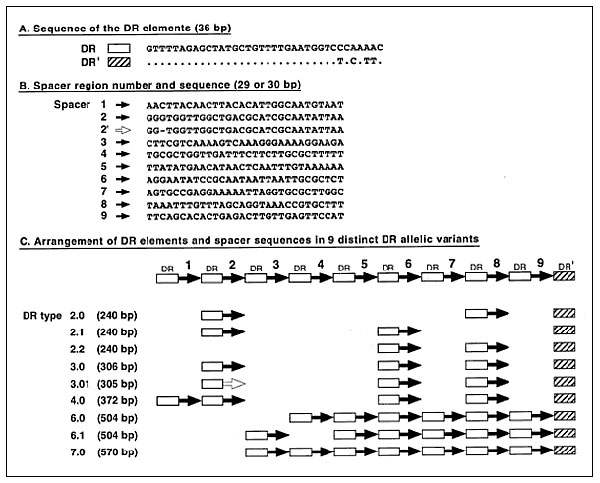Volume 5, Number 2—April 1999
Research
Rapid Molecular Genetic Subtyping of Serotype M1 Group A Streptococcus Strains
Figure 4

Figure 4. Polymorphism identified in the direct repeat (DR) region of serotype M1 group A Streptococcus. The data were generated by automated DNA sequencing of polymerase chain reaction products obtained with the oligonucleotide primers DR003 and DR004 described in the text. (A) The 36-bp sequences of the two related DR and DR' elements. Multiple copies of the DR element present in different M1 isolates all had the identical sequence. (B) The 29-bp or 30-bp sequences of the 10 distinct spacer regions identified in the analysis. (C) Arrangement of the DR elements and spacer sequences in nine distinct DR allelic variants. The DR types were given arbitrary designations based in part on the number of DR elements present. Open or cross-hatched rectangles represent copies of the DR or DR' elements; arrows represent copies of the spacer region sequences connecting the DR elements. The numbers above the spacer region sequences refer to the spacers designated in part B of the figure.